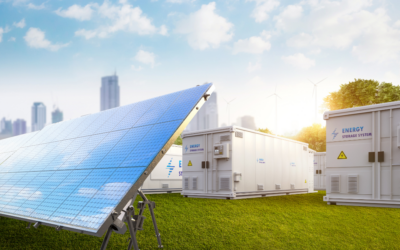Vertical farming is a type of indoor agriculture where the crops are stacked in layers to grow.
Since the late 1990s, as technology kept on improving, there has been a huge demand for large-scale vertical farms that are being produced for large retailers like Walmart.
It is expected that the global vertical farming industry will grow to $9.7 billion by 2026.
Although a majority of detention is paid on the larger operations that are set up in the factory spaces there are also smaller vertical farms tucked away in communities across the country.
But besides this, there has been a huge increase in the vertical farming spaces in the empty offices. This has increased since the COVID times as most of the office spaces remain unused.
The guide here will help you know more about it and understand how these vertical farm demands are increasing and taking over empty office spaces.
Understanding the growth of vertical farming
Vertical farming is turning out to be a great means for increasing greenery all around the office spaces that have been left unused since the COVID-19 times.
They now offer a place for farming and bringing back the greenery. The growth and the local communities have presented an opportunity even for the landlords who were stuck with a surplus of unrented commercial spaces.
Empty office spaces are not a new problem for property owners, as the COVID-19 pandemic increased the demand for remote work across various industries.
It is noteworthy that the national office vacancy rate saw a hit to 19.2% during the last summer while there was $1.4 trillion in commercial real estate debt.
Given the increase of unoccupied spaces, there have been a lot of ideas brought to fill various office vacancies, including renovating the units into the housing.
However, most of the developers have found the housing conversions as costly and complicated with no solid results. But luckily some have suggested the idea of vertical farms as another great solution.
They say they can rent fewer desirable units to these farms. It will not just bring back greenery but also help them recover money from the rental spaces.
Vertical farms do not have to take up the top floor. You can give out your basement floor as well. They will take that space that is hard to rent and make use of it.
Smaller vertical farms across the country can now fund their operations using the community-supported agriculture model.
Herein, the customers get to share locally grown vegetables regularly.
Through the feasibility analysis studies, many are now starting to take the risk and think out of the box to determine if this alternative use will be helpful.
The concept has been discussed over the years, but only now is it getting to the point where economically viable options are seeing considerable and offering better hope.
Vertical farm’s most efficient use is to grow agricultural goods.
Vertical farms help the producers to circulate light and air easily. They have massive growing plains on a relatively small footprint. Thus, this increases the productivity of each of the square feet available.
Just for a perspective, a vertical farm can easily be equivalent to about 700 acres of farmland that can all fit inside a size of a big box retail store.
But what is better is they can easily harvest 365 days per year, shortening the growth cycle to about ten days for most of the products, which nearly can make up to a 700% increase in the yield.
They can do all of this while saving about 1,000,000 gallons of water per week and using just 1% of the land for agricultural farming.
In addition to this, when the plants are all watered indoors, there is transportation through the roots, then it has sucked into the air handling units wherein the water gets condensed, and thus it puts it right back into the irrigation system.
Now, with this, 90% of the water that is normally lost in the open in the case of outdoor farms is recirculated in vertical form.
Vertical farm system and design
A vertical farm, if described in simple words, is a system of energy transfer and better efficiency, using which transfers are well determined and controlled for the economic success of an operation.
Normally vertical farming has been too expensive and inefficient when compared to traditional farming.
However, with the number of unused office spaces available, there has been a significant reduction in the cost of the installation. Also, there is a huge demand from the ends of the consumers.
Vertical farms, depending on the size, will cost up to $1,000,000 for development. However, the cost of each component keeps on decreasing as industries like robotic and solar continue to flourish.
A major improvement that has been made in the industry is LED lighting, which, due to its increasing popularity, has now continuously seen a decrease in the total price and increase in efficiency.
So, when it is used in unused rental spaces, one can expect better returns from it and farm fresh vegetables.
Can vertical farms actually be beneficial?
According to the experts, office spaces are already well equipped with the right environmental conditions required for growing food.
Given they control climate there is no need for major structural modification. Besides, the right growth system forms can easily adapt to different types of buildings and settings and thus offer an attractive proposition for prospective landlords.
In addition to this, with the use of the A.I. as applied by Agri Play, the installation of the system irrigation can be done in a better and more efficient manner.
In case systems are user-friendly, then anyone will be able to have vertical farms despite having no prior experience in farming.
So, as long as the execution is carried out effectively, it is believed that vertical farming can actually become a potential rival for traditional agriculture in urban spaces.
Vertical farming’s most favorable benefit here will be the added advantage of consistent year-round production without any worry of pests and climate vulnerability.
In addition to this, the vertical columns do not require any significant amount of money, up to 95%, which is way too low compared to conventional farming.
No doubt the benefits are quite many, but it is now seen that vertical farms cannot fully replace traditional farming. They can help address food security issues and will also offer access to nutritious food in underserved areas.
Now that the real state is facing new challenges, the unique remedy of vertical farming solves the two major issues.
With this, there will be a chance to utilize the vacant buildings in the right way and still have better quality food.
The majority of the companies are already supporting these ideas and have started to come up with plans that will be helpful for them to grow.
The industry keeps on changing every day, and with these new changes, there will be better economic growth. Well, the farms will create new green jobs and will also offer good quality food that will be healthy and safe.
Will vertical farms replace conventional ones?
Vertical farms are not dependent on whether it can be a great fix for food security issues.
This is why consumers and investors have shown more preference for these types of farms. There are now approximately 2000 vertical farms in the U.S. growing produce such as herbs, lettuce, and berries.
But from a financial perspective, vertical farming seems like a great dramedy. It has already raised one billion in 2021, which exceeded the combined funding generated in 2018 and 19.
But not everyone thinks that indoor farming is actually going to revolutionize agriculture.
There have been a lot of questions as to how farms can actually feed a world that relies on calories from grains such as corn, soy, and weed.
On the other side, experts have also mentioned that it is true that the current vertical farming is energy saving and so is it beneficial. However, some farms are already powered by renewable sources.
Everything needs time to adjust, so one needs to remember that these farms have just been around for quite a long time and are improving recently.
So, how well you wait and make the decision will greatly impact the future.
Conclusion
The demand for vertical farming keeps on increasing. If you are hoping to proceed with the same, it will be quite easy to find someone interested in renting out your property.
But if you need any other financial assistance, then Private Capital Investors are here to help. They have the experts who will help you get the best deals possible.
They will help analyze the top loan offers and then guarantee you get the financing at a lower interest rate. So better get in touch for the professional support you need during the tough times.





